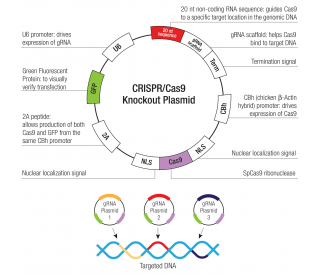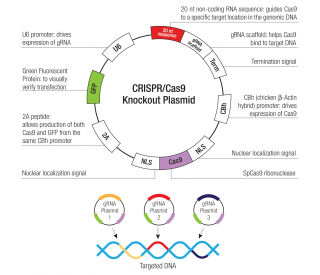详细说明
Purity
>90%, by SDS-PAGE under reducing conditions and visualized by silver stain
Endotoxin Level
<0.10 EU per 1 μg of the protein by the LAL method.
Activity
Bioassay data are not available.
Source
E. coli-derived Ser17-Pro108
Accession #
N-terminal Sequence
AnalysisSer17
Predicted Molecular Mass
9.7 kDa
SDS-PAGE
10 kDa, reducing conditions.
1359-RN |
| |
Formulation Lyophilized from a 0.2 μm filtered solution in Acetic Acid. | ||
Reconstitution Reconstitute at 50 μg/mL in 2 mM acetic acid, pH 3.0. | ||
Shipping The product is shipped at ambient temperature. Upon receipt, store it immediately at the temperature recommended below. | ||
Stability & Storage: Use a manual defrost freezer and avoid repeated freeze-thaw cycles.
|
Background: Resistin
Resistin (resistance-to-insulin), also known as adipocyte-specific secretory factor (ADSF) and found in inflammatory zone 3 (FIZZ3), is a 10 kDa member of a small family of secreted cysteine-rich peptide hormones. These molecules purportedly play some role in inflammation, glucose metabolism, and angiogenesis (1, 2, 3, 4). Human Resistin precursor is 108 amino acids (aa) in length. It contains an 18 aa signal sequence plus a 90 aa mature region. The mature region shows an N-terminal alpha -helical tail (aa 23 ‑ 44) and a C-terminal beta ‑sheet globular head (aa 47 ‑ 108) (5 ‑ 7). The Resistin molecule circulates as either a noncovalent trimer (minor form), or a disulfide-linked homohexamer (major form). Noncovalent trimers are generated when the alpha -helical segments self-associate to form a three-stranded coiled-coil structure. Covalent hexamers subsequently appear when the free Cys at position # 26 is engaged by adjacent trimers. It is hypothesized that the hexamer is the inactive form of the molecule, and bioactivity is achieved at the target site by disulfide bond reduction (5). Although Resistin family molecules can noncovalently interact to form heterotrimers in vitro, there is no evidence to suggest this occurs in vivo with Resistin (8, 9). Mature human Resistin shares 56% and 54% aa identity with mouse and rat Resistin, respectively. Rat Resistin possesses an alternate start site at Met48; this Met is not found in the mouse molecule, however (10). Rodent Resistin is expressed by white adipocytes, splenocytes, astrocytes, and anterior pituitary epithelium (6, 11, 12). Although the function of Resistin is unclear, it would seem to block insulin-stimulated uptake of glucose by adipocytes and promote glucose release by hepatocytes (6, 13, 14). As such, it has been proposed to participate in diet‑induced insulin-sensitivity. Diets high in fat promote an increase in overall adipocyte size. Hypertrophic adipocytes are known to secrete TNF-alpha which acts locally to block ACRP30 production. Since ACRP30 is an insulin-sensitizer, a drop in ACRP30 availability leads to insulin- insensitivity, which drives increased insulin production (a compensatory mechanism). High insulin induces Resistin secretion which now antagonizes insulin action, prompting more insulin production and more Resistin secretion (15).
References:
Kottke, M.D. et al. (2006) J. Cell Sci. 119:797.
Garrod, D.R. et al. (2002) Mol. Membrane Biol. 19:81.
Leckband, D. and A. Prakasam (2006) Annu. Rev. Biomed. Eng. 8:259.
King, I.A. et al. (1993) Genomics 18:185.
Theis, D.G. et al. (1993) Int. J. Dev. Biol. 37:101.
King, I.A. et al. (1996) J. Invest. Dermatol. 107:531.
Nuber, U.A. et al. (1996) Eur. J. Cell Biol. 71:1.
Chidgey, M. et al. (2001) J. Cell Biol. 155:821.
Khan, K. et al. (2006) Br. J. Cancer 95:1367.
Hashimoto, T. et al. (1997) J. Invest. Dermatol. 109:127.
Caubet, C. et al. (2004) J. Invest. Dermatol. 122:1235.
Descargues, P. et al. (2006) J. Invest. Dermatol. 126:1622.
Entrez Gene IDs:
56729 (Human); 57264 (Mouse)
Alternate Names:
Adipose tissue-specific secretory factor; ADSF; ADSFMGC126609; C/EBP-epsilon regulated myeloid-specific secreted cysteine-rich proteinprecursor 1; C/EBP-epsilon-regulated myeloid-specific secreted cysteine-rich protein; Cysteine-rich secreted protein A12-alpha-like 2; Cysteine-rich secreted protein FIZZ3; FIZZ3; FIZZ3MGC126603; found in inflammatory zone 3; HXCP1; Resistin; RETN; RETN1; RSTNXCP1







![Anti-CARD11 antibody [EPR2557] 100µl](https://yunshiji.oss-cn-shenzhen.aliyuncs.com/202407/25/ryuecwsu03m.jpg)
![Anti-CARD11 antibody [EPR2557] 40µl](https://yunshiji.oss-cn-shenzhen.aliyuncs.com/202407/25/0l4lvuuesv1.jpg)

![Anti-Caspase-9 antibody [E23] 100µl](https://yunshiji.oss-cn-shenzhen.aliyuncs.com/202407/25/3jnd4412gqi.jpg)

![Anti-CKS2 antibody [EPR7946(2)] 100µl](https://yunshiji.oss-cn-shenzhen.aliyuncs.com/202407/25/cfdt44gkqre.jpg)



 粤公网安备44196802000105号
粤公网安备44196802000105号